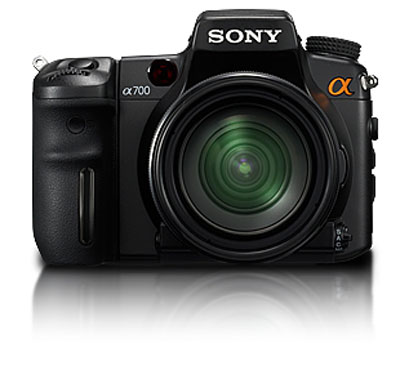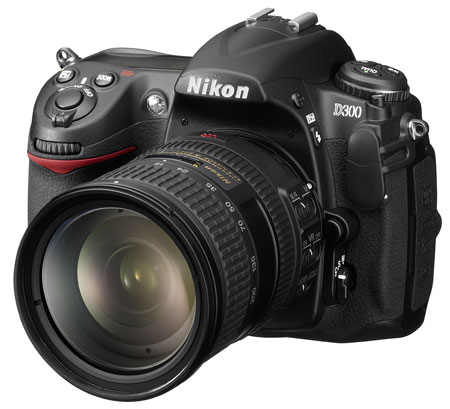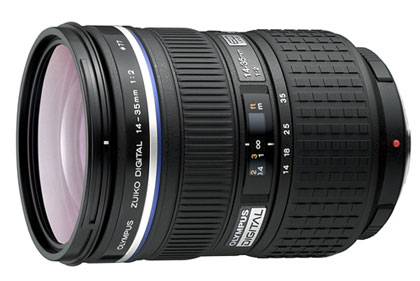Digital Camera Buyers' Guide - Year of the SLR
by Wesley Fink on November 23, 2007 6:00 AM EST- Posted in
- Digital Camera
Prosumer SLRs
It seems everyone is introducing new prosumer models. Understanding what's hot in this market of hard-to-please photography buffs will help you know what to look for in an entry-level camera. If you're in the market for one of these advanced amateur DSLRs, you may want to pay closer attention.

Sony started this prosumer round, just as they started the 10 megapixel (MP) round last year. The new top-of-the-line Sony is now their $1400 A700. Those who doubted that Sony was in the digital SLR market to win were greeted with a slick, stylish, and very fast 12.2MP DSLR with image stabilization, auto dust cleaning, a 3" hi-res LCD, 5.0FPS shooting, and new Sony brand lenses. Conspicuously absent is Live View, a feature pioneered by Olympus on DSLR cameras that allows the user to see through the lens on the LCD. This is standard fare on a point-and-shoot, but difficult to do with the "through-the-lens" optical viewing that is a feature of SLR technology.

Because they are so huge and influential in the photo market, Canon prosumer models receive lots of scrutiny. The new Canon model is the 40D, which continues the 20D/30D models that have defined the Canon prosumer DSLR. The 30D is 8MP and the 40D raises that to 10MP. Many expected an even higher-resolution 40D, but instead the 40D features the same 10MP resolution seen in the entry-level Canon XTi for the past year. New for the $1300 40D is much faster auto-focus, a 3" LCD replacing the 2.5", dust cleaning on startup, dust sealing, and Live View - a first for Canon. There are many other improvements, but they refine existing features of the Canon line.

Nikon announced - but has not shipped - the new D300, which is an update to the D200. The D200 got lost in the wake of the entry-level D80 last year. Nikon uses Sony sensors with their own electronics, and it appears the new D300 uses the same Sony 12.2MP CMOS sensor with on-sensor noise reduction found in the Sony A700. The D300 will launch at a street price of about $1800. The D300 also features a 3" hi-res LCD, very fast autofocus, Nikon's first auto sensor-cleaning system, 6FPS shooting, dust/splash sealing, and Live View.

Olympus has come to life recently, just when many had all but given up on them. Always the innovator, Olympus pioneered auto dust cleaning and Live View on digital SLR cameras based on their "digital-only" 4/3 standard. However, the Olympus 4/3 system was getting very long in the tooth, with a 5.5MP pro model E-1 introduced in 2003. Olympus has just started shipping their new E-3 flagship, which thoroughly updates the Olympus system.
Olympus says the E-3 is their pro model, and it features dust and splash sealing for both the E-3 body and pro lenses. The E-3 also introduces the first new AF module for Olympus in many years. The new AF, which was long overdue, features 11 cross-type sensors, each on two planes, for a total of 44 segments. According to Olympus, the result is the fastest auto focusing SLR you can buy when used with their new SWD (Sonic Wave Drive) lenses, such as their new 12-60mm f2.8-4.0 (24mm-120mm equivalent). The street price of $1699 is much less expensive that the $5000+ entry price for Nikon and Canon pro models. Many, however, feel the real competition for the E-3 is the "prosumer" Nikon D300 and Canon 40D.
The E-3 is also the first Olympus pro model to feature built-in flash, and it's dust and splash sealed. Auto sensor cleaning is a feature, image stabilization is built in and works with all lenses, and the latest incarnation of Live View with a fold out articulating LCD screen is featured. The LCD screen is 2.5", and not the 3" screen of competing models, but competing models don't have a flip-out LCD. Resolution is 10MP, but the E-3 supports ISO-3200 and it is definitely the low-noise camera many didn't think was possible with the smaller 4/3 sensor.
Canon ditched their FD breech mount years ago when they first introduced the EOS autofocus system. That risky move has paid off handsomely for Canon with their current line of all electronic, lens-motor driven lenses. Olympus took a similar tact by ditching their OM mount for an all-electronic mount for digital cameras. However, Olympus didn't have the influence of a Canon when they championed a smaller 4/3 standard sensor and claimed that lenses needed different designs for best digital performance. This was regarded by most of us as marketing-speak, but recent reviews of Olympus glass are showing their 4/3 lens designs - even their cheap kit lenses - do have less light fall-off and are generally sharper in digital photography than competing systems using APS-C or 35mm lenses.

The bottom line is the E-3 and recent Olympus lenses like the pro 14-35 f2.0 zoom (equivalent 28-70mm) and the tiny, cheap, but excellent quality 40-150mm (equivalent 80-300) f4.0-5.6 kit lens may finally gain Olympus the respect in the digital SLR market that has eluded them up to now.










74 Comments
View All Comments
Justin Case - Wednesday, November 28, 2007 - link
It's not just "name power". Pentax certainly deserves a mention due to features, build quality and price, but image quality and (above all) lens selection are far behind Canon or Nikon. It's an excellent alternative to compact cameras, and I suppose it's a reasonable choice for amateurs, but not really an option for pro / semi-pro work.P.S. - As a whole, this article is a joke, as are pretty much all photo-related articles on this site. It seems the author decided to compare spec sheets and draw (dubious) conclusions from that, instead of actually using the cameras. Thankfully, there are plenty of camera review sites where these same cameras are covered in depth, by experienced people, who actually use them before writing their conclusions. I suggest you go there, look at what the photographers have to say and (above all) look at photos taken with each camera (and lens).
yyrkoon - Saturday, November 24, 2007 - link
maybe you missed the last SLR lineup they did several months ago that had several pages 'dedicated' to Pentax cameras ?takumsawsherman - Saturday, November 24, 2007 - link
Maybe I did. And maybe that's why no one should assume that Anandtech readers read every article to come down the pike. Maybe some people were busy that week. Or maybe since this seems to be talking about which camera to buy, models still in the running should be given more attention considering some may buy based on the advice in this article. More exposure in the review and the camera might be considered. But when the other camera manufacturers have an entire page or more devoted to them, the chance of someone thinking of Pentax will be small indeed.In any case, I enjoyed the article for the most part, and it seems that someone's worry over whether the article had some critical comment attached is overworked. It was a good point, I agreed with it, get over it.
bigboxes - Saturday, November 24, 2007 - link
Is there a reason that Pentax is overlooked? Anyone?